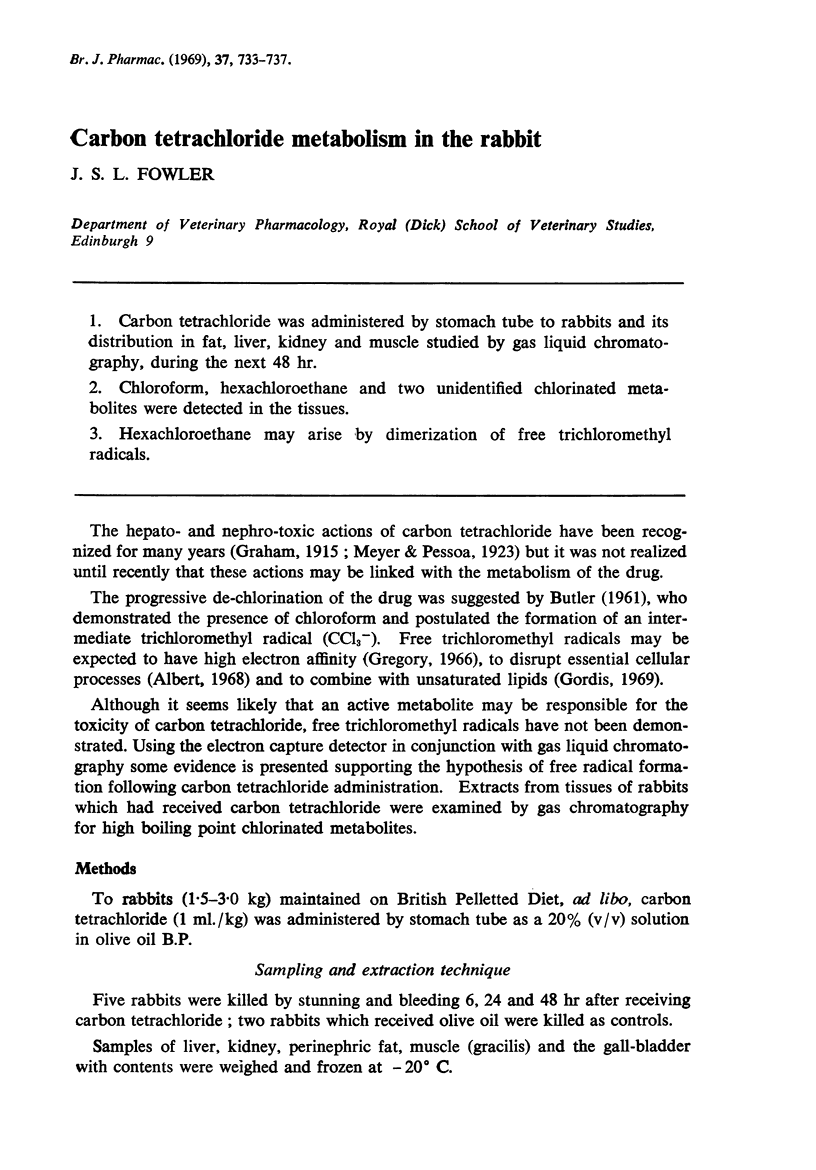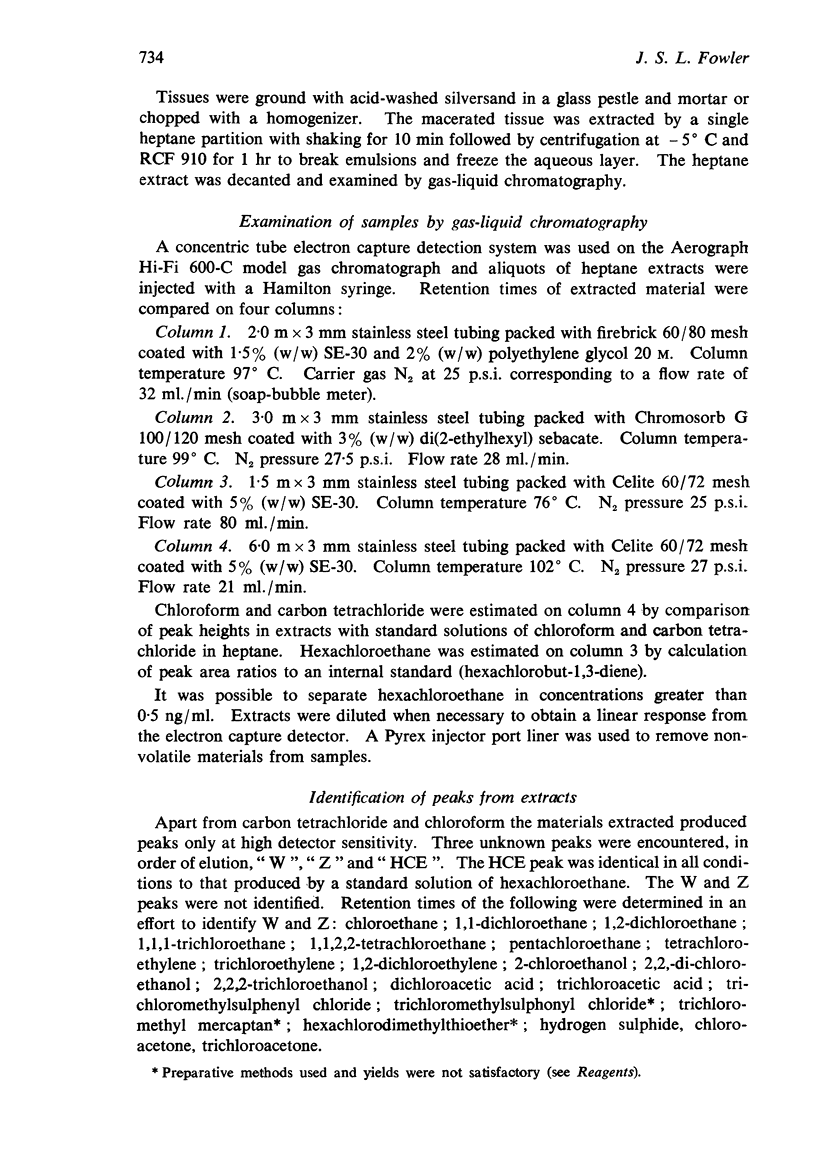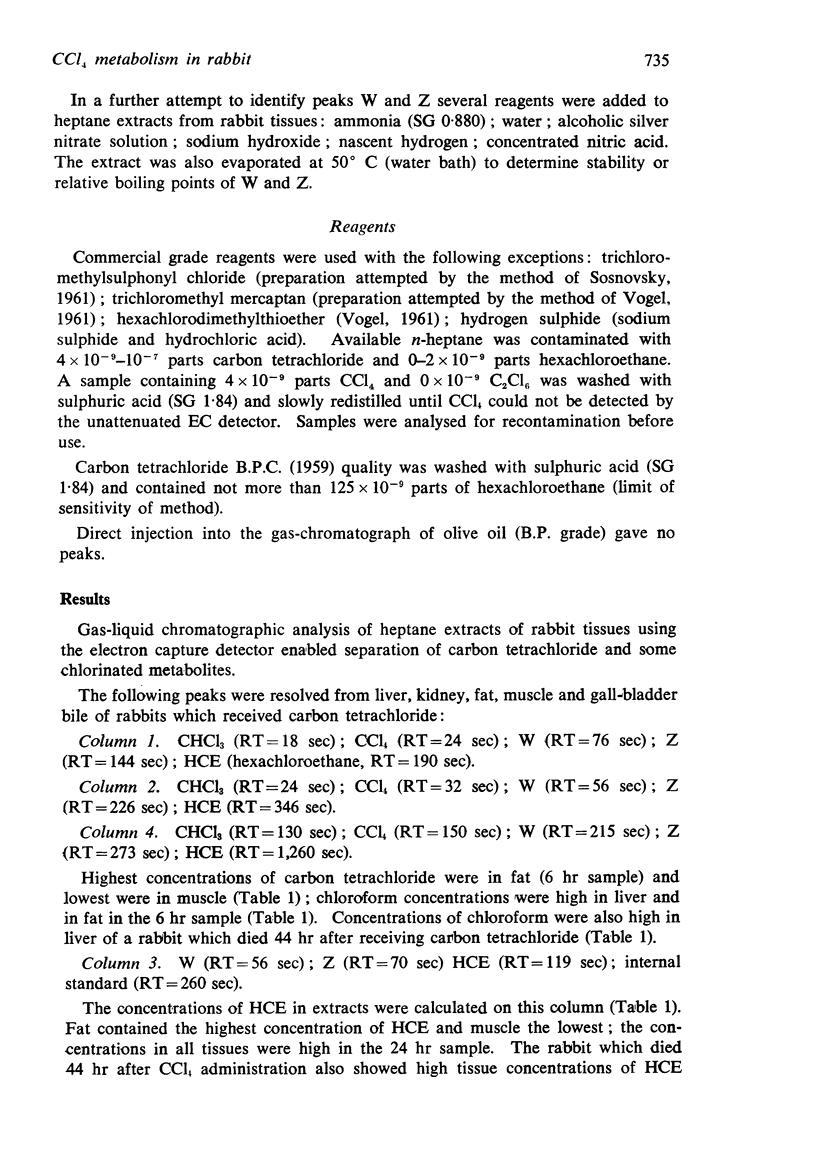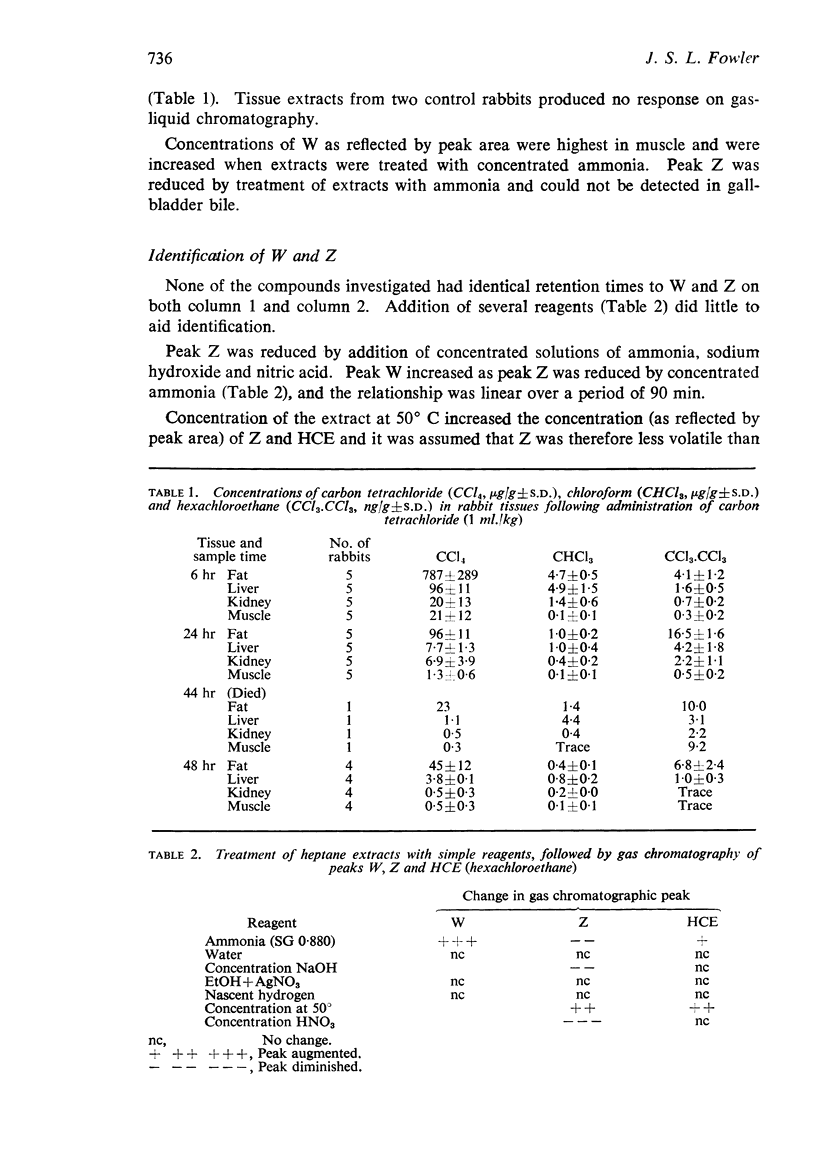Abstract
1. Carbon tetrachloride was administered by stomach tube to rabbits and its distribution in fat, liver, kidney and muscle studied by gas liquid chromatography, during the next 48 hr.
2. Chloroform, hexachloroethane and two unidentified chlorinated metabolites were detected in the tissues.
3. Hexachloroethane may arise by dimerization of free trichloromethyl radicals.
Full text
PDF




Selected References
These references are in PubMed. This may not be the complete list of references from this article.
- BUTLER T. C. Reduction of carbon tetrachloride in vivo and reduction of carbon tetrachloride and chloroform in vitro by tissues and tissue constituents. J Pharmacol Exp Ther. 1961 Dec;134:311–319. [PubMed] [Google Scholar]
- Fowler J. S. Some hepatotoxic actions of hexachloroethane and its metabolites in sheep. Br J Pharmacol. 1969 Mar;35(3):530–542. doi: 10.1111/j.1476-5381.1969.tb08294.x. [DOI] [PMC free article] [PubMed] [Google Scholar]
- Garner R. C., McLean A. E. Increased susceptibility to carbon tetrachloride poisoning in the rat after pretreatment with oral phenobarbitone. Biochem Pharmacol. 1969 Mar;18(3):645–650. doi: 10.1016/0006-2952(69)90089-6. [DOI] [PubMed] [Google Scholar]
- Gordis E. Lipid metabolites of carbon tetrachloride. J Clin Invest. 1969 Jan;48(1):203–209. doi: 10.1172/JCI105969. [DOI] [PMC free article] [PubMed] [Google Scholar]


